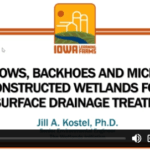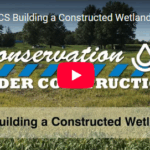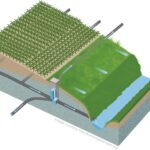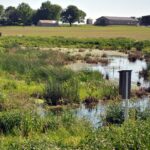Conservation Drainage
Throughout Illinois and other parts of the Midwest, farmers are increasingly investing in tile drainage systems to improve productivity and trafficability of their fields. Conservation drainage practices such as bioreactors, controlled drainage systems, saturated buffers, and constructed wetlands, are designed to capture and treat drainage from tile outlets, providing effective and often long-term nutrient loss reduction benefits.

Iowa Learning Farms: Constructed Wetland
In this webinar, “Tile Flows, Backhoes and Microbes: Constructed Wetlands for Subsurface Drainage Treatment,” Jill Kostel, Ph.D., senior environmental engineer at The Wetlands Initiative, discusses the siting, design and implementation of constructed tile-treatment wetlands that use the naturally occurring wetland functions and processes to capture and remove nutrients from tile flow.
Watch Video
Journal of Soil and Water Conservation: Constructed Wetlands
This research paper analyzes the ability of restored wetlands to reduce nitrogen and phosphorus concentrations in agricultural drainage water.
View Website
NRCS Controlled Drainage Video
This NRCS video reviews the effect of drainage water management, which allows farmers to actively manage the water on their fields, both in times of surplus and deficit.
Watch Video
NRCS Constructed Wetlands Video
Join Illinois Natural Resources Conservation Service and our conservation partners as we demonstrate how to design and build a Constructed Wetland. This new conservation practice helps farmers and private landowners improve water quality.
Watch Video
Transforming Drainage: Controlled Drainage
The Transforming Drainage project brings together research from experimental sites across the U.S. Midwest being managed under controlled drainage to explore driving factors and evaluate the potential for increased practice adoption.
View Website
UIUC Constructed Wetlands for Nitrate Removal
This fact sheet provides an overview of how constructed wetlands provide nitrate removal from tile drainage water, including information on siting, construction, and cost of implementation.
View Website